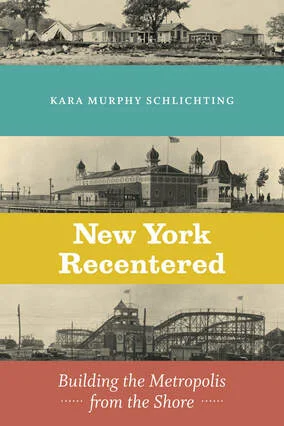Party Profits: Political Machines as Money-Making Ventures in Gilded Age New York
Reviewed by Atiba Pertilla
The 2020 presidential campaign is coming to a close with controversies swirling over the alleged and established entanglement of the two main candidates, Joe Biden and Donald Trump, in a variety of schemes to use their political position to benefit themselves or their families. At the heart of these concerns lies a conviction that profiting from political connections is a primary driver of Americans’ loss of faith in their elected representatives. Electoral Capitalism, a new book by Jeffrey Broxmeyer, focuses on public graft and political machines in Gilded Age New York and is a timely look at how earlier voters faced similar questions.
Read More“Ten Thousand Bigamists in New York”:
The Criminalization of Jewish Immigrants Using White Slavery Panics
By Mia Brett
The late 19th century and early 20th century saw a huge influx of Jewish immigrants settling in New York City. Eastern European Yiddish speaking immigrants fled the Pale Settlements due to violent pogroms and punitive decrees after the assassination of Tsar Alexander II in 1881.[1] This rise in immigration created a backlash of nativism and criminalization. In particular, anti-Jewish bigotry in New York City’s criminal justice system began to take the form of large-scale stereotypical assumptions as police, judges, prosecutors, and investigators became more familiar with Jewish immigrants from Russia and Poland.
Read More“The Colored People Have Dispersed”:
Race, Space, and Schooling in Late 19th-Century Brooklyn
By Judith Kafka and Cici Matheny
“The doing away with the distinctively colored schools and … bringing about mixed classes,” wrote the Brooklyn Daily Eagle in September of 1899, “has done more toward the education of the race than any other individual effort.” Brooklyn’s Board of Education had officially ended racial segregation in schooling in 1883, by requiring all district schools to admit any student living within their enrollment boundaries.
Read MoreIrving Berlin in Chinatown
By Samuel Backer
Few individuals are more closely associated with the development of 20th century American music than lyricist and songwriter Irving Berlin. From the early 1910s, when he was first launched into the stratosphere by era-defining pieces like “Alexander’s Ragtime Band,” until the late 1950s, when his success finally dried up, Berlin remained at the forefront of the nation’s burgeoning music industry.
Read MoreHow Dinosaurs Came to New York
By Lukas Rieppel
On February 16, 1905, the American Museum of Natural History unveiled an enormous dinosaur skeleton measuring more than sixty-five feet in length: Brontosaurus. This lumbering behemoth was discovered in a remote part of Wyoming several years earlier, and curators had just finished assembling its gargantuan bones into a free-standing display that would serve as the centerpiece of the museum’s recently inaugurated dinosaur hall. Over the next several decades, Brontosaurus became one of the most iconic dinosaurs of all time, and throngs of visitors flocked to the Upper West Side to see its fossil remains with their own eyes.
Read MoreEverybody’s Doin’it: Sex, Music and Dance in New York, 1840-1917
Reviewed by Jeffrey Escoffier
Dirty Dancing, the 1987 movie starring Patrick Swayze and Jennifer Grey, exploited a common cultural trope: the intimate connection many people feel between dancing and sex. It portrayed a couple whose dancing was explicitly sexual, who came from different social classes and who at the same time were falling in love. For many of its viewers, it presented a very romantic vision of the connection between sex and dancing. Dale Cockrell’s Everybody’s Doin’it: Sex, Music and Dance in New York, 1840-1917 (New York: W.W. Norton & Co. 2019) sets out to explore a more historical account of the interrelationship between popular music, social dancing and sexuality in nineteenth- and early twentieth-century America. As he shows, the making of popular music during the nineteenth-century often took place in bars, brothels and dance halls where prostitution was endemic. Social dancing was one of the ways that sex and music are linked.
Read MoreDistant Islands: The Japanese American Community in New York City
Reviewed by Olga Souudi
Daniel H. Inouye’s Distant Islands is a richly detailed, extensive account of the lives of Japanese living in New York City between 1876 and the 1930s. Little scholarly work on the lives of Japanese in New York, and on the East Coast in general, exists, either historical or contemporary, and Inouye’s book is a valuable contribution to this underexplored field.
Read MoreSuzanne Hinman's The Grandest Madison Square Garden: Art, Scandal, & Architecture in Gilded Age New York
Reviewed by Paul Ranogajec
Madison Square Garden was among the premier places to see and be seen in New York City at the turn of the twentieth century. As Suzanne Hinman amply documents in her new book, this palace of popular entertainment was truly a modern wonder of architecture and spectacle. Like the old Penn Station (another McKim, Mead and White building that sadly no longer graces the city’s streets) the Garden helped define the aesthetic and social landscapes of New York in the years around 1900.
Read MoreNew York Recentered: Building the Metropolis from the Shore
By Kara Murphy Schlichting
In 1865 New York City park commissioner Andrew Haswell Green came to the conclusion that the city had outgrown Manhattan Island. In a report for the Board of Commissioners of Central Park, Green argued that the city’s future should include its mainland environs of Westchester County north of the Harlem River. He articulated a river-spanning future for New York. Green reasoned that lower Westchester was “so intimately connected with and dependent upon the City of New York, that unity of plan for improvements on both sides” of the Harlem was “essential.”
Reprinted with permission from New York Recentered: Building the Metropolis from the Shore, by Kara Murphy Schlichting, published by the University of Chicago Press. © 2019 by the University of Chicago Press. All rights reserved.
Read More






